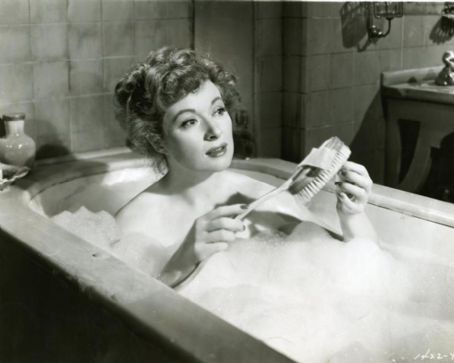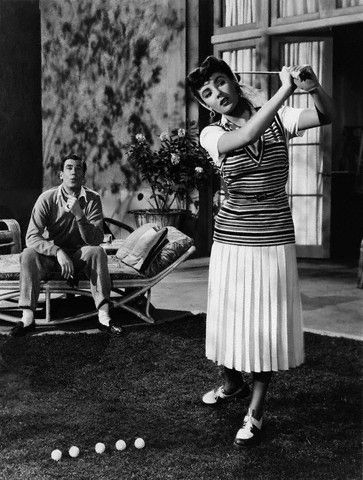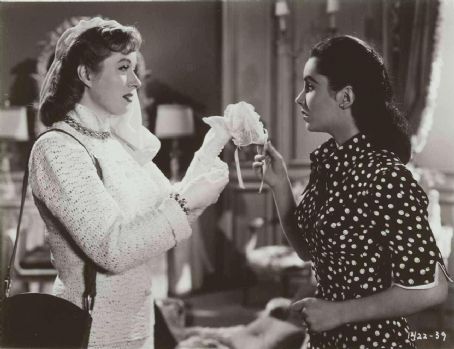 |
| In their first of eight pictures together. Photo Courtesy of http://www.dvdtalk.com/ |
As anyone will tell you in my family, I'm a sucker for kids. They're the living embodiment of innocence, they're sugar and spice and everything nice rolled into a warm body with crooked little grins, a big appetite for learning and discovering the world, and all they want to be is loved. A very highly dramatized and faulty film in regards to the truth about the real Edna Gladney, it's still a powerful film in it's overall message: All children should be loved, no matter their parentage.
Walter Pidgeon and Greer Garson portray Sam and Edna Gladney, the Texan and the Easterner. Sam is Texan through and through; loud and forthright. The moment he sees Edna (we as the audience only here about the meeting) when she comes into the bank, he tells her once she takes off her gloves: "That better not be an engagement ring." Startled, Edna asks, "Why?" And like any true Texan, he tells her very bluntly, "Because you're going to marry me."
A little later on, when Sam sort of kind of crashes the engagement party that is being thrown for Edna and her adopted sister, Charlotte, and dances with Edna, already, during that one scene, I was able to see how the pairing of Walter and Greer would become so successful and so lasting.
Leonard Maltin nails it on the head when he calls Blossoms in the Dust "a slick tearjerker". There are few truly happy happy moments. Instead, this film is a series of sad happy moments.
Time has passed, which is shown through a series of letters that they exchange when Sam goes back to Texas to "fix it up" for Edna panning across the screen, all showing how their greetings change as time passes on. They start out, "Dear Mr. Gladney . . . " to "Darling . . . " And it is let known through these letters that, despite Edna's first misgivings about Sam, she has fallen in love with him (just as Sam knew that she would).
When Sam returns to marry Edna and take her back to Texas, the happiness doesn't last very long. Very close to her adopted sister, Edna and Charlotte plan on a double wedding. Until, that is, Charlotte's fiancee's parents found out that she is a "foundling"--a child with no name. At the insistence of the almost-monster mother-in-law, she will not allow her son to marry Charlotte, even through the son argues that he doesn't care; he truly loves Charlotte. With a tear running down her cheek, Charlotte leaves the room, and after throwing her bracelet at Edna telling her that she wants her to have it to remember her by, she runs up the stairs into her, slams the door, and a few moments later, we hear a gunshot (a sad/weak spot in the picture for me. It's sad, but what woman in the early 1900s has a gun in her bedroom? And why did she give up so quickly? She didn't even give herself time to fully understand her situation before she ups and decides that her life isn't worth living if she can never marry because she's a "foundling".)
Time has passed once more, and though she still mourns the lost of her sister, she and Sam are finally given a little happiness when, after three years of marriage, Edna gives birth to a son whom they name Sammy. Yet once again, the happiness is short lived when Edna learns that she cannot have the brood of children that she had always wanted.
Sam and Edna make a life with their adored son. The little screen time that he is given before tragedy once again strikes shows that he is their whole world. Sam appears to be a wonderful father, Texan style of course, and with Edna you see her living her role as his mother to the fullest. And as Sammy, you see that he is a happily contented child who knows that he has a Mommy and a Daddy who loves him very much.
Their happy little world doesn't last nearly as long as it should, though. When Sammy and his nurse go out for a sleigh ride on Christmas day, the sleigh overturns, and little Sammy is killed. He is brought to his parents, and you know that Edna will never be the same again as she calls her son's name over and over as she holds him in her arms.
As I said, Blossoms in the Dust is not a film of happy happy moments, but rather its foundations are built on sad moments that turn into bitter-sweet moments. A couple of years have passed since Sammy's death, and while Edna had once been a young beautiful woman full of dreams, she is now a bitter woman with her dreams, at least the ones that she was aware of, buried with her son.
It is through the encourage-ment of her husband and through a family friend that she is finally able to move on, not to forget, but to move on and discover her calling. There are a few more sad moments, but I'll leave them for you to cry over, as I had to do. I didn't think I would be able to finish this picture, but I did, and I'm quite glad that I did. It's a fictionalized biography of the real Edna Gladney, but nonetheless, it is a beautiful story of a courageous woman who fought for what she knew was right who had overcome many tragic adversaries in her life.
Blossoms in the Dust reminded me of all that I had to be thankful for: loving parents and family. It also reminded me of all the poor children that aren't nearly as lucky as so many other families in this world.
A side note that I found interesting was that though this film cemented Greer's popularity, she didn't necessarily enjoy making it. She is quoted as saying that "the screen is neither a platform nor a pulpit." Despite her beliefs about what the silver screen was and was not, Greer gave it her all in this picture, and it shows twofold.
I recommend anyone to watch Blossoms in the Dust, but I also recommend that you either have a box of tissues handy, or a few hand-kerchiefs at hand. I give this picture 3/4 hankies (yes, I changed the rating system for this one picture, that's how much it had me).
A little later on, when Sam sort of kind of crashes the engagement party that is being thrown for Edna and her adopted sister, Charlotte, and dances with Edna, already, during that one scene, I was able to see how the pairing of Walter and Greer would become so successful and so lasting.
 |
| The (first) fiance, Edna, and the Texan. Photo Courtesy of http://www.bettesmovieblog.blogspot.com/ |
Time has passed, which is shown through a series of letters that they exchange when Sam goes back to Texas to "fix it up" for Edna panning across the screen, all showing how their greetings change as time passes on. They start out, "Dear Mr. Gladney . . . " to "Darling . . . " And it is let known through these letters that, despite Edna's first misgivings about Sam, she has fallen in love with him (just as Sam knew that she would).
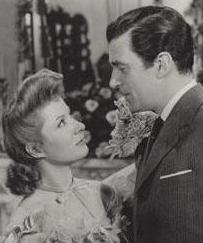 |
| Edna and Sam. Photo Courtesy of http://www.missgreergarson.com/ |
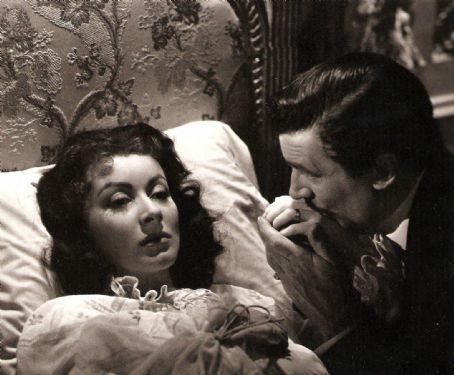 |
| This is what women wish they looked like after giving birth. Photo Courtesy of http://www.photos.lucywho.com/ |
Time has passed once more, and though she still mourns the lost of her sister, she and Sam are finally given a little happiness when, after three years of marriage, Edna gives birth to a son whom they name Sammy. Yet once again, the happiness is short lived when Edna learns that she cannot have the brood of children that she had always wanted.
Sam and Edna make a life with their adored son. The little screen time that he is given before tragedy once again strikes shows that he is their whole world. Sam appears to be a wonderful father, Texan style of course, and with Edna you see her living her role as his mother to the fullest. And as Sammy, you see that he is a happily contented child who knows that he has a Mommy and a Daddy who loves him very much.
| Mommy and Sammy. Photo Courtesy of http://www.divxclasico.com/ |
As I said, Blossoms in the Dust is not a film of happy happy moments, but rather its foundations are built on sad moments that turn into bitter-sweet moments. A couple of years have passed since Sammy's death, and while Edna had once been a young beautiful woman full of dreams, she is now a bitter woman with her dreams, at least the ones that she was aware of, buried with her son.
 |
| The loves of her life: Sam, Charlotte, and Sammy. Photo Courtesy of http://www.monsterhunter.coldfusionvideo.com/ |
Blossoms in the Dust reminded me of all that I had to be thankful for: loving parents and family. It also reminded me of all the poor children that aren't nearly as lucky as so many other families in this world.
A side note that I found interesting was that though this film cemented Greer's popularity, she didn't necessarily enjoy making it. She is quoted as saying that "the screen is neither a platform nor a pulpit." Despite her beliefs about what the silver screen was and was not, Greer gave it her all in this picture, and it shows twofold.
 |
| A bitter-sweet goodbye. Photo Courtesy of http://www.monsterhunter.coldfusionvideo.com/ |



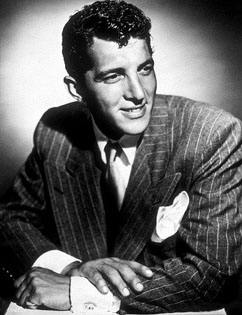
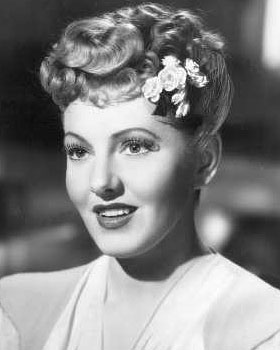
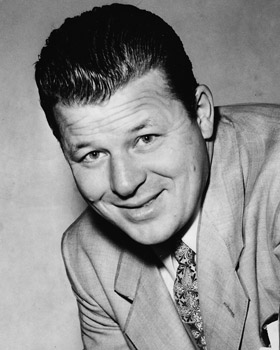


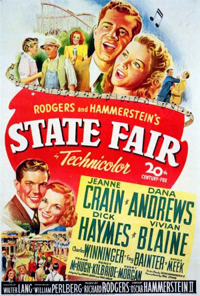






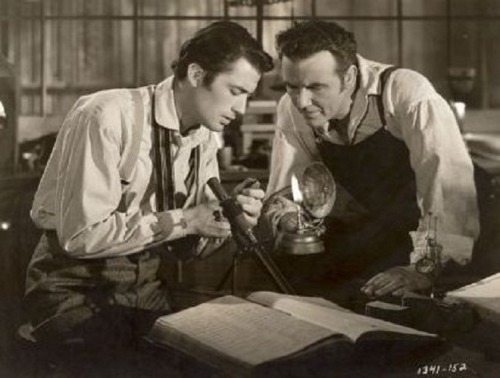



---Ronald-Colman-773750.jpg)








